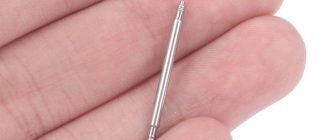😲 Ever wondered why one side of aluminum foil is shiny and the other matte? Turns out, it has nothing to do with cooking preference—and everything to do with how it’s made 💡 Some chefs swear by the matte side, others call it a myth… so which side are you on? Tips in the article below 👇
Aluminum foil is one of those everyday kitchen items we use without thinking twice—whether it’s for roasting vegetables, wrapping leftovers, or keeping food warm. But if you’ve ever looked closely, you’ve probably noticed something curious: one side is smooth and shiny, while the other is dull and matte.
So what’s the deal? Is one side meant for cooking and the other for storage? Not exactly.
To understand the difference, let’s go back a bit. Before aluminum foil became a household staple, people used tin foil for wrapping food and pharmaceuticals. That was until around 1910. Tin had a few downsides—it was harder to shape, left a metallic aftertaste, and wasn’t as practical. Aluminum eventually replaced it thanks to its flexibility and neutral taste.
Aluminum foil also has the added benefit of reflecting about 88% of light and heat, making it useful beyond the kitchen—like in photography and insulation. And unlike some disposable products, foil is recyclable, which gives it an eco-friendly edge.
As for the two-sided appearance, it all comes down to how it’s made. When aluminum sheets are rolled out in factories, they’re pressed between heavy rollers to achieve their paper-thin finish. Since the foil is so delicate, two sheets are rolled at once to prevent tearing. The sides that touch the rollers come out shiny, while the inner sides stay matte.
So, is there a functional difference between the shiny and matte sides? For most cooking and food storage tasks—no. Both sides work the same. That said, some cooks swear that using the matte side helps avoid sticking or burning, though there’s little scientific proof to back it up.
In photography or crafts where light reflection matters, the shiny side is the better choice because of its mirror-like surface.
Have you ever used the “wrong” side of foil and noticed a difference? Or do you have your own foil tricks in the kitchen? Share your experience in the comments!







